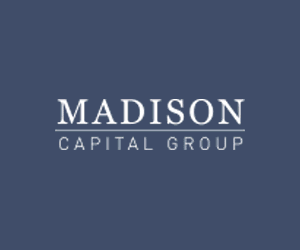Corey Maple of Legendary Capital’s Keynote “We All Take Care of the Capital!”
March 7, 2022 | James Sprow | Blue Vault
Corey Maple founded Legendary Capital to sponsor alternative private real estate securities, primarily in the hospitality sector. In his presentation for Alts Week 2022, he discussed what our mission is as an industry. It starts with transparency. The second pillar of our core values is communication. Legendary puts out a monthly update on each of their programs. That type of communication needs to be consistently provided. Then he emphasized honesty, doing what’s right all the time. He looks at performance, across the alternatives industry, and sees that most companies are doing pretty well. He sees those organizations that have been providing alternative investments over the years that should be very proud of what they’ve done. Another value is to “do as you say” that builds confidence in our industry. He likes to see organizations add the “personal touch” to their businesses, which is an advantage in the alternatives investment industry where we have fewer investors and can deal with them on a more personal basis. We are all partners in this business and we have a job to protect our business and we don’t want other people to look out for us when we can look out for ourselves.
He stressed three main points: transparency, communication, and performance.
He looked at the “Cast of Characters” in the alternatives investment process: The Due Diligence Officer, The Financial Advisor, the Client, the Firm Principals, The Sponsors, and Corey himself (because he was giving the presentation!).
Going back 15 years, the bulk of the offerings raising capital were true, publicly registered entities. The real estate companies were filing S-1s or S-11s with the SEC, under the ’33 Act, and complying with the ’34 Act. Those filings required a significant commitment of time and money to come to market. From the Due Diligence officer’s standpoint, they had good visibility, during the offering period and after the offering closed. There were volumes of information available to assess the risk along the way. Over time, many programs did very well. Some did very poorly. Overall, we did pretty well to bring good products to market.
In 2015, 15-02 came about. There was a landscape change, partly due to performance, but also due to the rule changes. A lot of broker dealers were not doing Reg. D’s. Reg-D’s had been around a long time, but they came into vogue once again. N-1A’s came into the space, mostly as Interval Funds. Then Reg-D’s came roaring back. But they were exempt from registration, exempt from Blue Sky, and only filing a Form D, very opaque.
A Reg.-D can be put on the street in only a month or two. During the offering process they are subject to scrutiny. But then the offering closes and it becomes a black box, with no obligation to share the information to anyone. What’s the solution to this lack of transparency? The Form-10 is a voluntary public filing with the SEC, with the same reporting requirements as all public companies.
For example, in June of 2018, Legendary Fund REIT III. They announced that they, as a Reg. D, would be the first program to file voluntarily. They raised capital for a year and showed up on EDGAR which turned an opaque Reg. D offering into an open book. This type of transparency may not make sense for all offerings. Anything bigger than $100, $150 or $200 million should regulate itself, as an industry, to be transparent. It’s up to the industry to put a minimum standard on the industry for this kind of transparency.
The Due Diligence Officers have to get information from the Company, independent Due Diligence firms and other DDOs. They have all the data, but how does it fit together. Is the offer going to be a strong offer? Ultimately, it goes to an Investment Committee, who want to protect the firm. The selling agreement gets signed, and now the dealer and the investment company are “married.” It takes a lot of hard work to get from the signing to the one-on-one selling process. Hundreds of financial advisors and thousands of clients are involved. Now the question becomes, “How is the business plan going to be executed?” There’s that black box again, all sealed up. How does that offering measure up? Have they done a great job, or are they a ticking time bomb?
Some people provide volumes of data to keep their investors informed. Some you have to “shake the tree” to get performance information. For some, the selling agreement doesn’t have any force anymore. What’s the solution? That selling agreement is the only document that ties the offering to the distribution syndicate.
Corey is imploring ADISA and IPA to pool their influential members together to form a committee of sponsors, RIAs, broker dealers, influential advisors, due diligence officers to create a solution to the Reg. D conundrum that we have. Create a reporting clause to be added to the selling agreements with stipulated reporting requirements and the recipients, and what they are obligated to report to their investors. The requirements can’t be onerous. They must be fair to all the parties. The industry should standardize these requirements. It will take a lot of thought and time to put it together. Then, get the industry to promote and even insist on adding these requirements to selling agreements. It puts us all on a level playing field and it makes sponsors responsible for what they’re doing. Every one of the participants in the industry is going to be happier.
This is for the good of the industry. If we minimize the issues in our environment, it will de-risk the industry. It won’t prevent all the bad actors, or from the failure of business plans. But we need to start the conversation about how we can create standardization and standardized expectations about the information we provide and the format in which it is provided. If we do that it will be another step toward best practice, toward taking care of the capital, taking care of our financial advisors and, most importantly taking care of the investors.
With ADISA coming up, it would be a great venue to start that conversation and drive our industry further in this direction.
There are still many sessions to come this week. Register here now!










